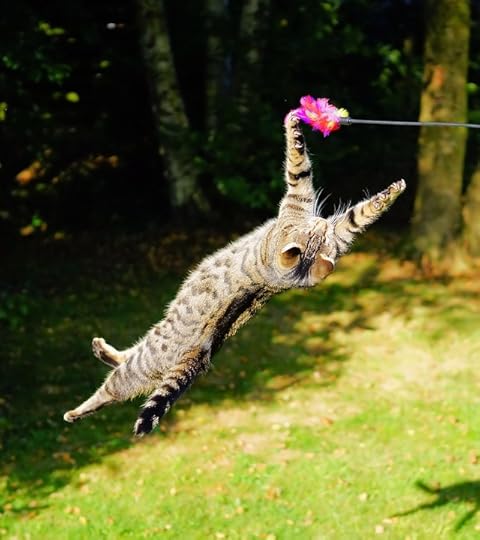Oxford University Press's Blog, page 405
February 16, 2017
Ten facts about the accordion
Whether you dub accordion music annoying or enticing, you cannot deny the instrument’s persistence. The earliest version of the accordion emerged in the early 1800’s and one can still find it on many street corners today. Certain universities, museums, and soloists have assisted in the accordion’s longevity. We’ve assembled 10 facts about the instrument that may satisfy our enduring curiosity about the instrument.
1. Accordions can be classified in many different ways, such as by body shape, keyboard type, and the organization of notes. Models can be further divided by quality of manufacture, refinements of design, numbers of parts, tuning systems, and extra ranks or registers of different-sounding reeds (operated by shifts).
2. Castelfidardo, Italy has arguably produced and exported the most accordions ever.
3. Franz Walther from Vienna created the first chromatic button accordion in 1850.
4. The first chromatic button accordion had 46 buttons for the right hand, arranged in three rows of minor 3rds, each row a half-step apart. The bass section had eight diatonic buttons divided between single bass notes and two-note chords.
5. By the early 20th century, the accordion was associated around the world with traditional music, cafés, dance halls, and music halls.
 Accordion by adaoaalves, Public Domain via Pixabay.
Accordion by adaoaalves, Public Domain via Pixabay.6. Hugo Herrmann composed the first piece for a solo accordion entitled Sieben neue Spielmusikenin 1927.
7. One of the most important composers of new music for the accordion was Wolfgang Jacobi (1894–1972).
8. Ernst Hohner founded and directed the Harmonika-Fachschule in Trossinge in 1931 with the help of Hermann Schittenhelm, Armin Fett and Ly Braun. It was probably the first official state academy.
9. The World of Accordions Museum, which opened in 1993 in Duluth, Minnesota, is the only accordion-specific museum in the United States. It houses 1000 instruments.
10. Accordions and concertinas came to African coastal cities Africa in the 19th century by European and West African (notably Kru) sailors, merchants, and settlers, and were eventually taken inland by migrant workers.
Did we leave out any fun facts about the accordion?
Featured image credit: “Accordion playing boy in Rome” by Per Palmkvist Knudsen. CC BY-SA 2.5 via Wikimedia Commons.
The post Ten facts about the accordion appeared first on OUPblog.

The conflict of laws and international commercial arbitration
It’s a fundamental principle of developed legal systems that justice is blind. This is often represented by the blindfolded Lady Justice. Objectivity is key to the determination of legal disputes, and parties’ rights and obligations.
International commercial arbitration plays an important role in the resolution of cross-border commercial disputes. Rather than submitting their disputes to foreign courts (which may carry significant business risks), commercial parties will often include an arbitration clause in their contracts.
Through these clauses, they agree to resolve future disputes by arbitration rather than through State courts, before an arbitral tribunal rather than a judge. The arbitration is likely to be held in a neutral country. Empirical studies carried out at the School of International Arbitration confirm arbitration’s preferred status as a dispute resolution mechanism.
What, then, of blind justice in arbitration? Does international commercial arbitration hold fast to this same objectivity ideal?
It’s well-established in international commercial arbitration that all arbitrators – even party-appointed arbitrators – must be impartial and independent. However, objectivity can be compromised by means other than bias. An analysis of the current legal framework for resolving the conflict of laws in international commercial arbitration raises serious objectivity concerns, given the wide discretions enjoyed by arbitrators in identifying the governing law for disputed contracts.
In most commercial contracts, parties choose their governing law, and these choice of law clauses are generally respected. However, statistics published by the International Chamber of Commerce demonstrate that parties don’t choose the governing law in around 16% of cases, based on the ICC’s 1990-2015 case load.
 Lady Justice, Not So Blindfolded, by Karolus_BR. Public domain via Wikimedia Commons.
Lady Justice, Not So Blindfolded, by Karolus_BR. Public domain via Wikimedia Commons.Though it’s a distinctly commercial form of justice, international commercial arbitration remains a dispute resolution process grounded in the application of law. Where parties do not themselves choose a governing law, and where a dispute arises under their contract, its identification falls to the arbitrators.
Different legal systems provide different solutions to different legal problems. The following are just a few examples where the law may differ from State to State: whether or not commercial parties owe good faith obligations; the availability of specific performance as a contractual remedy; the enforceability of agreed sums for breach; and the length of time permitted to bring proceedings under relevant statutes of limitations.
When making choices between (different) potentially applicable laws, arbitrators exercise a conflict of laws function, which stands to substantially affect the outcomes of cases. Take, for example, arbitral proceedings that are instituted after three years; where the Respondent’s State has a two year statute of limitations; and where the Claimant’s State has a four year limitation period. If the Claimant’s home law is applied, it will at least be afforded the opportunity to argue its case, but if the Respondent’s law is applied, the claim will not be allowed to proceed at all.
Given that arbitrators’ conflict of laws determinations can substantially affect the outcomes of cases, it might be surprising to know that there is often no specific test or rule for arbitrators to apply in choosing between different potentially applicable laws. Rather, arbitrators are generally empowered to apply the law deemed “appropriate” or “applicable.” The matter is otherwise left entirely within their broad discretion, to select whatever law is felt (by them) best suited to the dispute.
To take just a small number of examples: the UNCITRAL Arbitration Rules 2010 indicate in their Art. 35(1) that a tribunal “shall apply the law which it determines to be appropriate”; Art. 21(1) of the ICC Arbitration Rules 2012 instructs a tribunal to “apply the rules of law which it determines to be appropriate”; and Art. 39(1) of the ACICA Arbitration Rules 2016 requires a tribunal to “apply the rules of law which it considers applicable.”
None of these rules – or the world’s many others like them – provide sufficiently certain tests or criteria for arbitrators to apply in making conflict of laws decisions. The discretions enjoyed under these kinds of provision are so wide, that arbitrators may ground their conflict of laws decisions in any reasoning – even their subjective assessments of the merits of competing laws.
How does this comport with the ideals of objective justice? Arguably, this kind of discretionary procedure does not sit comfortably with objective dispute resolution, and thus the needs of arbitration’s users. User needs are an important consideration in the design of arbitral procedure – arbitration’s very existence, as a legal institution, is premised on serving international merchant needs.
From the parties’ perspective, arbitrators’ wide conflict of laws discretions lead to legal uncertainty, and generate transaction costs. Not only do the parties’ rights and obligations in an arbitration itself stand to be affected, but also their contractual performance before any dispute even arises, and their settlement negotiations. Uncertainty over the governing law can also impact upon the parties’ due process rights in formal arbitral proceedings.
Arbitral procedure is in a constant state of reform. States and arbitral institutions strive to innovate, and to improve their arbitral laws and rules, based on their assessment of user needs. Recent reforms have included provisions addressing complex arbitration issues such as consolidation, as in Art. 22(1)(ix)-(x) of the LCIA Arbitration Rules 2014, and also provisions regulating the early dismissal of claims and defences where “manifestly without legal merit”, as in Art. 29 of the SIAC Arbitration Rules 2016.
Is arbitral justice blind? On the current state of the law, not quite. Curtailing these wide conflict of laws discretions currently prevailing in arbitration – and replacing them with a more certain rule that would be more useful to arbitrating parties and their advisers – would be a worthy item for future attention in discussions about the ongoing reform of arbitral procedure.
Featured image credit: Statue Of ‘Justice’ Old Bailey by Lonpicman. CC BY-SA 3.0 via Wikimedia Commons.
The post The conflict of laws and international commercial arbitration appeared first on OUPblog.

February 15, 2017
College Arts Association 2017 Annual Meeting Conference Guide
The Oxford Art team is excited to see you in our hometown of New York City for the upcoming 2017 College Arts Association’s Annual Conference! With so much to look forward to at this conference, we’ve gathered some suggestions from Oxford attendees. Wondering what to see and do while you’re in the city? We’ve got you covered.
Alodie Larson, Editorial:
I look forward to CAA to see old friends and to hear about new research. CAA sessions on pedagogy help me align content development with teaching needs, and I’m interested in digital humanities projects that relate information in new ways. I work with scholarship in print and online, so I’m looking forward to a session on Art History in Digital Dimensions as well as to one on the other end of the spectrum called Why Print?
Sarah Pirovitz, Editorial:
CAA is always a lovely conference! I look forward to catching up with both longtime and new authors here every year. For those looking to grab a glass of wine with friends, I warmly recommend Sofia’s on East 50th as a cozy alternative not too far from the conference hub.
John Priest, Marketing:
This will be my first time at CAA! I’m looking forward to meeting our authors and chatting about their interests, current projects, and upcoming events (and hopefully catching a session or two at the conference). For those with spare time visiting NYC, I recommend checking out Neue Galerie’s upcoming Alexei Jawlensky retrospective—the first in the US!
Here are just a few of the conference sessions we’re looking forward to:
Wednesday, 15 February
Picturing Social Movements from Emancipation to Black Lives Matter.
8:30 AM in the Sutton Parlor South, 2nd Floor.
Mediated Landscapes: The Use of Photography, Film, and Television in Land Art.
10:30 AM in the Rendezvous Trianon, 3rd Floor.
Non-Western Genealogies of Art Criticism.
1:30 PM in the Sutton Parlor South, 2nd Floor.
Feminist Interventions in the Technosphere.
3:30 PM in the Nassau Suite East/West, 2nd Floor.
Thursday, 16 February
Exploring Art Markets of the Past: Tools and Methods in the Age of “Big Data.”
8:30 AM in Gramercy A/West, 2nd Floor.
Changing Lenses: Contemporary Photography and New Media From the Arab World.
10:30 AM in Sutton Parlor North, 2nd Floor.
New Studies in Manet and Impressionism.
1:30 PM in the West Ballroom, 3rd Floor.
Friday, 17 February
8:30 AM in the Beekman Parlor, 2nd Floor.
Connected Art Histories: A Global Flow of Images.
10:30 AM in the Regent Parlor, 2nd Floor.
1:30 PM in the Regent Parlor, 2nd Floor.
Indigenous Resurgent Practices.
3:30 PM in the Trianon Ballroom, 3rd Floor.
Saturday, 18 February
8:30 AM in Gramercy B/East, 2nd Floor.
Is There An Aesthetics of Decolonization? New Perspectives from South Asia.
10:30 AM in the Sutton Parlor Center, 2nd Floor.
National Committee for the History of Art (NCHA).
12 PM in the East Suite, 4th Floor. Featuring Maxwell L. Anderson.
3:30 PM in the Sutton Parlor South, 2nd Floor.
Don’t forget to stop by and visit us at the Oxford University Press booth for a chance to:
Browse and buy our new and bestselling titles on display at a 20% conference discount.
Get free trial access to our suite of online products.
Pick up sample copies of our latest art journals.
Meet the team!
Be sure to follow along on social media using #CAA2017. For more information, visit the official conference website.
Featured image: Mural in New York. Public domain via Pexels.
The post College Arts Association 2017 Annual Meeting Conference Guide appeared first on OUPblog.

The eternal Cheshire cat
Unlike Alice, who was advised to begin at the beginning and stop only when she came to an end, I’d rather begin at the end. The English-speaking world is interested in the Cheshire cat only because Lewis Carroll mentioned it. The origin of the proverbial grin has never been explained, so that, if you hope to receive an enlightening answer from this post, you can very well stop here. Moreover, no one knows the answer even in Cheshire, though some things are beyond dispute: Lewis Carroll did grow up in Cheshire, and it was not he who coined the idiom, though something he heard or remembered about Cheshire cats might have suggested the image of a grinning feline to him. Most of what I’ll say about the subject can be found elsewhere, but a few details will, I hope, pique our readers’ curiosity.
In the North Riding of Yorkshire (the division into ridings is a thing of the past; riding means “thriding,” as it were, “one third,” from Scandinavian, with initial th– lost), gamekeepers used rather odd sayings. For example, one would say, to indicate the desire to be at home: “I wish I had our cat by the tail.” Presumably, that cat neither grinned nor jumped. Another Yorkshire idiom I ran into was: “Grinning like a weasel in a trap.” Americans invented the phrase “Smiling like a possum (eating shit).” The parentheses are important. Obviously, an animal’s smile or ferocious “grin” can indicate disgust. But for every saying in the world there is an opposite. Compare “Smiling like the cat that swallowed (ate, got) a canary.” Against this background, the possessor of a vanishing grin is nothing out of the ordinary. The question is of course why not a cat or the cat but a Cheshire cat was selected as the heroine of the simile.
 A weasel anticipating its doom.
A weasel anticipating its doom.There is a huge corpus of Cheshire idioms. Some of them are, to use my undergraduate students’ favorite word, weird. Consider: “But when, quoth Kettle to his mare,” “He stands like Mumphazard, who was hang’d for saying nothing,” “As fair as Lady Done,” and so forth. Many of them appear in Joseph Cox Bridge’s book Cheshire Proverbs. Against the background of smiling possums and weasels, our Cheshire friend looks rather trivial, but every scholarly problem is like a snowball: it tends to feed on itself, gains momentum, and attracts ever new researchers. That is why so many people have tried to guess what cats inhabit Cheshire, an illustrious county palatine, and what accounts for their unusual sense of humor.
Since Cheshire is famous for its cheese, there could have been a connection between its dairy products and cats’ unappeasable happiness, to quote Mark Twain, but, as a correspondent to Notes and Queries put it in 1850, this explanation is not quite satisfactory. Of the same type is the suggestion that cats in Cheshire enjoyed the great number of mice and rats infesting the port. There are of course more ways than one to turn a cat’s head, but animals hardly ever smile and certainly never laugh when they are happy. The only excuse for my citing the conjectures repeated so many times is that they provide a glance into the past and reflect the state of folk etymology long before even our grandparents were born. Already in the early 1850s, the explanations known about the idiom had sufficient currency in England to make their way into print.
“Some years since [1850] Cheshire cheeses were sold in this town [Bath] moulded into the shape of a cat, bristles being inserted to represent the whiskers. This may possibly have originated the saying.” Yes, but, more likely, the bristles were meant to remind people of the saying, or there was no connection between the two. “I remember to have heard many years ago [1852] that [the phrase] owes its origin to the unhappy attempt of a sign painter of the county to represent a lion rampant, which was the crest of an influential family, on the sign-boards of many of the inns. The resemblance of these lions to cats caused them to be called by the more ignoble name.”
In a much later survey (1904), it was pointed out, with reference to Robert Holland’s Glossary of Words Used in the County of Chester (1886?), “that the grin of the wolf on the arms of the Earl of Chester might have suggested the saying, as ‘the wolf’s head might have been mistaken for that of a cat’. But the resemblance between a wolf’s head and a cat’s head is hardly so obvious as to render this deduction perfectly satisfactory.” True enough. Here is a postscript to the heraldic idea. “Both the lion and the leopard when they occurred in signboard art were vulgarly spoken of as the ‘Cat’… The leopard of course belongs to the cat tribe, and is in reality of the same family with the cat; and it is this affronté or full-faced attitude of the leopard, as distinct from both the statant and the passant position, that I think, probably suggested the ‘grinning’ part of the proverb, and this because the mouth of the lion or leopard is generally represented by heraldic carvers and artists with a curve upwards at each extremity” (1904). I am afraid this explanation is more ingenious than persuasive.
Here is another shot at the cat: “The form in which I have heard this expression used is ‘Grinning like a Cheshire cat chewing gravel’.” Are the last two words merely the addition of some enterprising genius, or are they part of the original simile?” (1852). The spirit of this variant is the same as in the ignominious one about an opossum eating shit, but the alliteration (Cheshire… chewing) makes the hypothesis interesting. We don’t know whether the saying was current many years before it was recorded in the late seventeen-seventies. Probably it surfaced more or less when it was coined. Perhaps there was indeed a saying of the type to grin like a cat chewing gravel. Later, some wit (“wag”), not necessarily from Cheshire, added the name of the county before cat. Chewing gravel was forgotten, and the famous image was born. The novelty enjoyed such great success that women in Cheshire became known as Cheshire cats (an analog of Lancashire witches). Those were old, male chauvinists’ days, and we shudder at their lack of civility.
 This is a sweet jessy cat. It purrs but never grins, and it was not born in Cheshire.
This is a sweet jessy cat. It purrs but never grins, and it was not born in Cheshire.In America the phrase to grin like a chessy cat surfaced in an 1877 dictionary. The mysterious word chessy alternated with jessy. This usage was restricted more or less to Philadelphia, but now jessy cats seem to be all over the place. Jessy means “weak, effeminate” and, according to Urban Dictionary, also “a complete pimp, or stoner, whom everybody likes and who gets all the girls.” The word must have come from the name Jessie. It seems that a jessy cat has nothing to do with Cheshire and does not grin. Under no circumstance can jessy cat be an old “Americanism” brought to the New World by the first settlers. It surfaced on the East Coast about a hundred years after it was recorded in British slang.
 Who said that this cat won’t jump? Just try to make it happy, as Tom Sawyer did, who fed Peter his aunt’s medicine.
Who said that this cat won’t jump? Just try to make it happy, as Tom Sawyer did, who fed Peter his aunt’s medicine.To conclude, cats don’t grin “when they are having a good time,” to return to Mark Twin’s Tom Sawyer and the cat Peter, but they may show their displeasure when for some mysterious reason they chew gravel. This is true of any county and any country in the world.
Image credits: (1) “Black-footed Ferret Release at Rocky Mountain Arsenal National Wildlife Refuge” by USFWS Mountain-Prairie, CC BY 2.0 via Flickr. (2) “Samtpfote Jessy with funny look” by Mattes, Public Domain via Wikimedia Commons. (3) Cat, Flying by Karsten Paulick, Public Domain via Pixabay. Featured image credit: “Alice’s Adventures in Wonderland” by John Tenniel, Public Domain via Wikimedia Commons.
The post The eternal Cheshire cat appeared first on OUPblog.

Market solutions for improving treatment of farm animals? A review of At the Fork
How are farm animals treated and should one care? For the record, I am not vegetarian and I follow something similar to a paleo diet high in animal proteins and fats. But whether or not one believes animals have rights, libertarian philosopher Loren Lomasky once gave me the most succinct argument for caring about the welfare, at least some, of animals: “You wouldn’t put your cat in a microwave, would you?” But what if certain farm animals had intelligence and awareness levels in the same league as pets we care so much about? It turns out that pigs can master certain basic video game tasks that dogs and even monkey cannot, and they appear to be able to non-verbally communicate with humans or other pigs in much the same way as dogs. Regardless of one’s position on eating meat, one can still care about not intentionally inflicting pain on animals, or care that they are treated in humane ways. John Locke and Immanuel Kant adopted such a perspective.
Producers John Papola and Lisa Versaci, whom I know from their most excellent economics music videos, have produced a feature length documentary, At the Fork. John is a meat eater and Lisa is not, and in this film they visit various farms to see how meat and dairy animals are raised and treated. John narrates the film and at the beginning states, “So while I’m no animal activist, I am a filmmaker and the best way for me to honestly explore this issue is to hit the road and make a film about it.”
At the Fork is beautifully shot with attractive visuals throughout. It is well edited, well-paced, and accompanied with a quality soundtrack including music from executive producer Dave Matthews. A 1970s PBS documentary this is not. The movie also interviews different farmers, ranchers, politicians, business people, and scholars with different perspectives. A Michael Moore style documentary this is not, either.
The film shows a range of farms; from factory farms that keep animals in close quarters, to free range farms. I appreciated that the film never showed anything close to gruesome, but bringing viewers close to the animals let viewers see aspects of how pigs, cows, and chickens for meat, dairy, or eggs live.
While letting viewers reach their own conclusions about animal welfare or rights, the film raises many interesting questions. Toward the beginning, they visit an animal sanctuary where John voluntarily locks himself in the equivalent of a gestation crate that most pig farms keep breeding pigs for the entirety of their pregnancies. These crates are two foot by seven foot cages not big enough for pigs to turn around or fully lie on their side. Breeding pigs have multiple pregnancies per year so can find themselves in one of these crates for 10 months in a year and in slightly larger farrowing crates after giving birth. John asks, “So this is the price that they pay for me to eat my spare ribs?”
After showing some factory farms where pigs spend their lives indoors, the film shows farms with varying degrees of outside access to open pastures. When the film cut to a sweeping visual of pigs almost certainly enjoying themselves, at a free range farm, I started feeling guilty about having no idea about the conditions that these animals are raised. If I would not force a dog to live in a six by twenty inch cage, should I, as a consumer, demand that a pig be raised under such conditions? The film interviews animal scientist Temple Grandin who states, “It would be like living in an airline seat and I’m never allowed to walk in the aisle.”
A nice aspect of the movie is its presentation of range of animal husbandry methods. One particular pig farm uses gestation crates only for artificial insemination, then transfers pigs to open pens where pigs can move freely and socialize with each other. Another uses an outside system where pigs go between a barn during inclement weather and pastures otherwise. In another, pigs and four other red meat species forage a forty acre forest. This rancher states, “I think it’s our moral obligation to care about these animals. This whole idea that we have dominion over the animals, well yeah that’s fine, but dominion does not mean domination.”
The film shows how factory farming arose because of economic factors with consumers demanding lower prices. In a market economy, producers seek to supply whatever consumers ask for. But At the Fork also shows how many consumers are now demanding more ethically sourced meat and dairy products. One popular program that one may have observed at Whole Foods and other meat counters is the Global Animal Partnership 5 Step Animal Welfare Rating Program. This private certification program rates farming methods and gives a farm a Step 1 rating if it has “no cages, no crates, and no crowding” all the way a Step 5 if it has animal centered pasture farms.
The system has many parallels to private certification systems I have documented in my research. The London Stock Exchange, for example, was first created to give assurances to the public, and its members adopted as their motto “my word is my bond.” Similarly the New York Stock Exchange provided a Good Housekeeping Stamp of Approval that its listed firms were not “fly by night” operations. Whole Foods founder and CEO John Mackey states, “For the first time ever higher degrees of animal welfare are being rewarded in the marketplace, and that’s creating incentives for people to innovate and create this race to the top.”
Although chains like Whole Foods are at the forefront of such movements, consumer demand is king at all price points. Temple Grandin states that most consumers dislike the idea of gestation crates when they are told about them, and at this point America’s largest pork producer, Smithfield, is phasing out the use of gestation crates, and McDonald’s, Burger King, and Wendy’s are phasing out purchasing pork from producers that use them. These are not exactly expensive food suppliers, but their actions show that greater awareness and demand from consumers can help improve animal welfare.
As an economist who usually spends time reading about financial markets and alcohol, I did not know how I would react to seeing At the Fork. I ended up finding the film very moving.
The film does not present anyone in a bad light, and many, including Temple Grandin, come off in a particularly good light. Grandin has been working for decades advising farms and slaughterhouses on how to be more comfortable and less stressful for animals. Grandin states, “Yes, I ethically justify eating meat, but we’ve got to give animals a good life, we’ve got to give them a life worth living.”
At the Fork is really a visual story that gets people to think about what could be abstract philosophical questions in different ways. It is also presented in an aesthetically attractive way. Even if you don’t change your mind, watch it and enjoy.
Featured image credit: Cattle grazing silhouette by skeeze. Public domain via Pixabay.
The post Market solutions for improving treatment of farm animals? A review of At the Fork appeared first on OUPblog.

Iceland’s unruly terrain and hidden inhabitants
When people first learn about my travels to Iceland, the response I most often hear goes something like: “Iceland! That’s on my bucket list.” I understand. It’s hard to resist an arctic wonderland littered with flaming volcanoes and thundering waterfalls, where for months on end the sun barely sets on moss-crazed mountains and whale-infested waters. Maybe you’ve already been there, adding your own drop to a rising sea of tourists, estimated at nearly two million in 2016, a veritable flood for an island whose population hovers around 330,000.
Yet numbers can be deceiving, as not all inhabitants of the island are so easily accounted for. Take spirits for instance. For those who participate in andleg mál, or “spirit work,” spirits are a part of everyday life. It also seems they’re making a comeback, a curious trend in modern Europe. When I ask Icelanders about this, “Why Iceland?” they unfailingly gesture toward the same terrain that entices tourists. Andleg mál practitioners often surmise that geothermal forces have an effect on people’s perceptions; religious leaders suspect that wide-open spaces expand spiritual inclinations; and most everyone agrees that the earth’s unruliness cultivates certain dispositions. As Valgerður, a social worker, described it: “the very, very alive land that we live in that is sometimes fire, sometimes ice, sometimes green and lush, and sometimes hard and cold; I think this creates a sense of humility toward energy we cannot understand.”
 Svínafellsjökkull Glacier sliding past a mossy mountain by Corinne G. Dempsey. Used with permission of photographer.
Svínafellsjökkull Glacier sliding past a mossy mountain by Corinne G. Dempsey. Used with permission of photographer.Since these conversations take place in the “northern capital” of Akureyri (population: 17,000), far from Reykjavík (metro population: 200,000), people’s impressions of the landscape’s impact make a certain sense. Digging deeper, it seems Iceland’s unruly earth does more than boost spirit populations; it drives the nature of these populations, as well. Like the fire-and-ice terrain that gives as well as takes, its residing spirits nurture as well as trouble, engaging humanity in reciprocal ways.
We see this reciprocity in andleg mál’s primary practices of healing and trance that serve the living and the dead, where human healers team up with spirits to treat earthly ailments and entranced bodies make room for anguished spirits to engage in therapeutic conversations. Spirits partners join earthly practitioners once their practices are launched or help to launch them from the start.
From an earthly standpoint, initial attempts to make contact often feel like harassment. It begins with a benign childhood “gift” of perceiving spirits that, typically waning during adolescence, returns with a vengeance in early adulthood. Fearing for their sanity, people usually try to ignore their “gift” and, if unsuccessful, enlist andleg mál mediums to close it down. Ever persistent, spirits find a “back door” to enter, making themselves known in different, yet no less disquieting, ways.
According to andleg mál hindsight, spirit disruption isn’t spurred by ill intent but by altruism. Upon finding a potential partner who registers their presence, they simply hammer harder because work is waiting to be done. Once the human target relents and agrees to a working andleg mál relationship, troubles abate. In part, this is because spirits must keep up their end of the deal as well. As Ásdís, a healer, explained, nodding toward her kitchen window, “I don’t want them to pop over when I’m in the store or when I’m out there. Only if they want something important. So [my healing sessions] are the times I give them.’”
Consider by contrast andleg mál’s closest cousin, Spiritualism, that arrived in Reykjavík around 1905, boomed countrywide, then fizzled by mid-century. Founded as a rebuttal to late 19th-century scientific discoveries that challenged religious beliefs, Spiritualism has always taken the scientific high road, playing down deep trance practices aimed at aiding angst-ridden spirits. Working to rein in the uncanny, its mediums are encouraged to stay awake and in control. Yet Spiritualism never institutionalized in Iceland and, as a result, when spirit work regained its footing in the 1990s, it had drifted from traditional aims such as offering proof of life after death.
 Turf church of Hof in Örfæli by Corinne G. Dempsey. Used with permission of author.
Turf church of Hof in Örfæli by Corinne G. Dempsey. Used with permission of author.Andleg mál’s departure from Spiritualism, reflected in earth-spirit reciprocity, necessarily engages the unruly. Meanwhile, Icelanders engage, and necessarily so, with unruly terrain. Despite dramatic standard-of-living improvements since the 1970s, regular run-ins with active volcanoes, earthquakes, and avalanches continue to keep people on their toes. It’s worth noting that in Reykjavík, where urban life buffers inhabitants from nature’s unwieldiness, conventional Spiritualism doesn’t lag far behind. Here, mediums tend to work more traditionally, delivering messages of reassurance from a waking state.
Not to be forgotten are Iceland’s other, better known, hidden inhabitants: elves, fairies, and huldufólk (hidden folk). While researching huldufólk traditions last summer, Swarthmore undergraduate Sadie Rittman often asked, as did I, “Why Iceland?” and received, again, a unanimous nod to the landscape. Yet vital differences remain. Huldufólk authorities—those who lead habitat tours and found elf schools—portray them as interacting helpfully, if not therapeutically, with non-hidden humanity. By contrast, if we scroll back to centuries-old folklore, huldufólk are downright demanding, and often frighteningly so. Crucial to this shift is that today’s attractions, although led by Icelanders, appeal almost entirely to tourists. Served well by this therapeutic flow, visitors flocking to Iceland arrive en masse during summertime, when the living is easy and spectacular landscapes, like the huldufólk, confer happy magic in abundance.
A pattern emerges: Iceland’s feisty spirits and hidden folk face off against monochromatic versions of themselves, rendered by Spiritualism and tourism respectively. It’s a feistiness that thrives on less-than-tameable terrain that, as Valgerður puts it, cultivates humility. After all, science, to which Spiritualism is indebted, cannot domesticate all that bewilders us. Light-filled touristic magic likewise cannot be sustained when one’s earthly existence involves periods of pitch darkness, deadly avalanches, and iceberg-punctured ships. As andleg mál’s reciprocal practices suggest, by quieting the harassment and blunting the dark, we could very well end up compromising the light, as well.
Featured image credit: Northern lights above Akureyri. Photo by Ármann Hinrik. Used with permission.
The post Iceland’s unruly terrain and hidden inhabitants appeared first on OUPblog.

February 14, 2017
How much do you know about ancient Greek and Roman marriages?
Today is Valentine’s Day, a holiday centered on celebrating love and romance. The notion that love forms the core of romantic relationships and marriages is a rather modern concept. Indeed, throughout much of history love in many cultures had very little to do with marriage.
Marriage in ancient Greece and Rome, particularly among the upper classes, was a contractual arrangement engineered by fathers or male relatives of different families. Such betrothal agreements were primarily political and/or financial in nature, and the resulting marriages were chiefly concerned with dowries and the procreation of legitimate children to continue a family line. Lacking in love or not, the Greeks’ and Romans’ celebration of marriage was still marked by particular customs. Some of their marital traditions form the roots of modern practices today. For instance, while the Romans might not have gifted diamonds and other “bling” as frequently as suitors do now, an intending husband did solemnize his engagement with a kiss and an iron ring (anulus pronubus) placed on the third finger of his partner’s left hand.
Test your knowledge with this quiz below to see how much you know about Greek and Roman marriage customs, and perhaps learn a few new facts!
Quiz background image credit: “Roman marriage vows,” by Ad Meskens. CC BY-SA 2.0 via Wikimedia Commons.
Featured image credit: “Wedding preparation,” by Shakko. CC BY-SA 3.0, via Wikimedia Commons.
The post How much do you know about ancient Greek and Roman marriages? appeared first on OUPblog.

Children’s information ecosystems in the United States
Information ecosystems are normally thought of as consisting of collections of facts that float in and out of one’s life, usually in a structured way. We routinely receive and use at work, the news regularly viewed on our smart phones, and for children, whatever they are taught in school. If we did nothing different in the way we live our lives, a predictable supply of information would enter our world, data that we need in order to not change the way we live. That truth is observable in all societies as the environmental feedback one needs to survive and thrive.
Historians are increasingly focusing their attention on these ecosystems and have learned that in all periods of history there existed information ecosystems and that whenever there were tools available to write down facts, and then later machines for moving it about, that information was documented. The invention of the typewriter, computer, PC, and the Internet are examples immediately put to work collecting and moving about information. Historians have also learned that children have information ecosystems too.
In Western Europe, the United States, and Canada, literacy rates among children have been quite high and growing over the past three centuries. As soon as a child could read, they gained access to much information in the way adults did for work and other activities. Books with stories, later academic subjects at school, still later others to support hobbies and other interests became part of a child’s information ecosystem. Everyone reading this blog undoubtedly experienced a childhood of books and magazines aimed at them.
When we look at the world through the eyes of children, we see several other components of their information ecosystem. First, they learn from each other, such as that Santa Claus really does not exist, that their parents put presents under the tree. Educators have tumbled across that obvious truth, designing teaching methods to take advantage of the fact that children share information. We can see when we walk into a child’s classroom and where all the tables are round, not rows of desks. This is because with round tables children can help each other read, fill out their mathematics worksheets, and collaborate on solving problems.
Second, because we know their minds are like little sponges soaking in everything they hear, they ask questions of their parents: Is there a God or a Santa Claus? Where do babies come from? Why is the world round? Television, book writers, and parents reading non–fiction to their children at bedtime inject more facts into a child’s information ecosystem. For the past two centuries, American book publishers have produced thousands of titles for children. Scores of historians documented the welcoming attitude of young people for such materials, even today in an age where screens are irresistible to children.
 “next generation” by zeilfaenger.at. CC BY 2.0 via Flickr.
“next generation” by zeilfaenger.at. CC BY 2.0 via Flickr.Third, we come to the question of screens: television programming, the same on laptops, tablets, and smart phones and the Internet. Child psychologists and educators feared screens for most of the second half of the twentieth century. But increasingly less since the late 1990s because children take in information regardless of technology platform. The technology was never the problem, only the content. Parents in the 1880s were concerned that their young sons were reading books about boy gangs. Today, most television programming for young children tells stories about how the cartoon characters solve problems after understanding the underlying issues and facts of the case. Dora the Explorer comes to mind. Children love these programs and the screens upon which they are displayed.
Finally, we get to the issue of games and technology. A two–year–old can walk into Barnes and Noble and already know how to use a Kindle and what program to seek out. The large number of math and other problem solving games available over the Internet is standard fare for a 6 to 55–year–old person. Early PC–based education for children was boring, repetitive, and essentially an online version of paper–based workbooks. Meanwhile, children signaled to psychologists and educators that just as games taught them new information and skills, such as counting and keeping score, so too did online games. Not all were violent, although even these taught children eye–hand coordination, to think strategically, and to track results.
In the past decade, students of children’s education have studied the potential of using online games to teach children. Results so far strongly supported the use of technology to teach and to enrich a child’s information ecosystem. It’s increasingly obvious in K–12 classrooms when we see stacks of tablets loaded with math, history, and language games. At home in all socio–economic classes, children engage in “screen time” to play, often directed to games that teach them how to create animals, buildings, vehicles and other images, or to compete against each other in mind games and math skills. They even play old games online, such as checkers and chess.
What historians of information ecosystems have to tell parents, educators, and child psychologists is that the construction and use of information ecosystems by and for children has been underway for a very long time and that the little ones love these. They just don’t know that we call what they interact with “information ecosystems.” But once they “get it,” they expand it just as adults do. Remember that the next time your child asks you to buy them more volumes in a series about dinosaurs or American history or begs passionately for a new game on the family’s iPad.
Featured image credit: “click asi” by Amelia Wells. CC BY 2.0 via Flickr.
The post Children’s information ecosystems in the United States appeared first on OUPblog.

Flowers and humans – a curious love affair
Humans love flowers! We admire their varied colors and shapes, enjoy the way they smell, and (especially on a day like today) give them to those we love.
But why has this affection for flowers evolved in us – given that flowers have certainly not evolved to impress us? In fact, we gain very little benefit (apart from joy) from them.
It is true that some flowers are edible, and that flowers may indicate where an edible part of a plant can be found, or help us distinguish an edible from a toxic plant – but these “uses” of flowers can hardly explain their universal appeal to our species.
One clue is that flowers stimulate the same sensory apparatus that humans use for assessing the quality of fruits. Fruits often have colors similar to flowers, and one theory suggests that trichromatic color vision in primates has evolved to better detect and evaluate edible fruits. From an olfactory perspective, floral volatiles are chemically similar or even identical to those emitted by fruits, and thus smelling a flower may possibly bring to mind a ripe, sweet fruit.
But the allure of floral fragrances is also culturally embedded into human society, as the perfumes we daub or spray on our bodies are often derived from flowers. Indeed, the search for new fragrance compounds from flowers is carried out by specialist perfumers as a form of bio-prospecting. Roman Kaiser, one of the most famous and dedicated of these perfumers, has undertaken a number of epic journeys in search of new fragrances. One of these field trips involved sampling the scent of flowers in the canopy of a rainforest while suspended from a hot air balloon!
On the other extreme, some flowers have a repulsive smell when they imitate decaying matter, dung, or carrion. The flowers deploy these unpleasant smells to attract animals such as carrion flies and dung beetles which unwittingly disperse the pollen as they search for places to lay their eggs. Such flowers elicit repulsion in humans because they stimulate sensory perception that evolved to help us avoid rotten or toxic material. Interestingly, new research shows that fruit flies share our human aversion to faecal odours and use special receptors around their mouth to detect and avoid animal faeces when searching for fruits on which to lay their eggs. The ultimate reason why humans and fruit flies stay clear of these odours is probably because decaying protein-rich organic material is often populated by harmful bacteria.
In general, flowers elicit sensory responses in us that have evolved in a different context, and that make us like (or, rarely, dislike) them. This biological concept is called “receiver bias”, and is applicable not only to humans enchanted by flowers but also to the pollinators which are the real targets of their alluring signals. The flowers of most plant species contain a food reward for their pollinators in order to encourage loyalty, but pollinators are also frequently tricked into believing that flowers are food sources when they are in fact completely unrewarding. This form of deception is particularly common among orchids. There are about 25,000 species in the orchid family and it has been estimated that around 40% of these species offer no rewards to their pollinators. Biologists have often puzzled over why plants would benefit from cheating rather than rewarding their pollinators. One suggestion is that the lack of rewards discourages pollinators from lingering for too long on any one plant, and thus promotes cross-pollination.
 Ophrys speculum. Image provided by the authors and reused with their permission.
Ophrys speculum. Image provided by the authors and reused with their permission.Flowers that don’t offer floral rewards, and even a few that do, often use various forms of mimicry to attract their pollinators. When asked to think of an example of mimicry in nature, most people will think of wing pattern mimicry in butterflies, a classical example of adaptation through natural selection that was discovered by the English naturalist Henry Walter Bates during his travels in South America in the mid-nineteenth century. Yet few are aware that there is also an abundance of examples of floral mimicry in plants. These elaborate natural hoaxes include flowers that attract their insect pollinators by posing as dead animals, or as receptive female wasps, or even as wounded bees.
In some of these cases, the flowers are pretending to offer food and thereby attract hungry pollinators. However, the greatest deception occurs when flowers emit certain signals, often chemical, that trick pollinators into believing that the flowers are mating partners, or sites to lay eggs. In some of these cases, hapless insects will even ejaculate or lay eggs on the flowers. The flowerheads of one African daisy species are even decorated with raised dark spots, giving sex-starved male insects the impression that the flowerheads are occupied by a whole bevy of resting female insects!
Floral mimicry exploits the powerful receiver biases of pollinators. It evolves because it increases the attractiveness of flowers to pollinators, thereby promoting the genes of the mimic through the additional seeds that are produced. Indeed, the tremendous diversity of flowers in plant families such as the orchids, arums, and milkweeds is in part due to the variety of different mimicry strategies that have evolved to deceive insect pollinators.
Nobel Prize winner Konrad Lorenz once said that it is the affection towards a living object that drives our scientific endeavor towards it. This is certainly true of our research on floral biology, so perhaps it’s fair to say that we were already biased towards flowers, and that it is due to this affection that some of their secrets have been uncovered.
Featured image: Daisy by AdrianaAlexaW. CC0 Public domain via Pixabay.
The post Flowers and humans – a curious love affair appeared first on OUPblog.

From Byron to boy bands: A timeline of heartthrobs
From dreams of Prince Charming or dashing doctors in white coats, to the lure of dark strangers and vampire lovers; from rock stars and rebels to soulmates, dependable family types or simply good companions, female fantasies about men tell us as much about the history of women as they do about masculine icons. The changing position of women has shaped their dreams about men, going from Lord Byron in the early nineteenth century to boy-bands in the early twenty-first. The timeline below highlights ten heartthrobs, fictional and real, that set hearts aflutter over the decades.
Featured image credit: Heart card pastels by kaboompics. Public domain via Pixabay.
The post From Byron to boy bands: A timeline of heartthrobs appeared first on OUPblog.

Oxford University Press's Blog
- Oxford University Press's profile
- 238 followers



